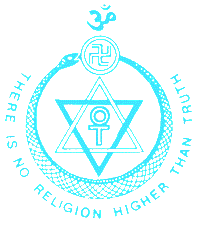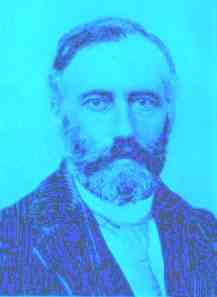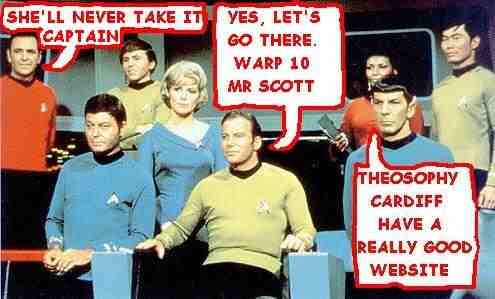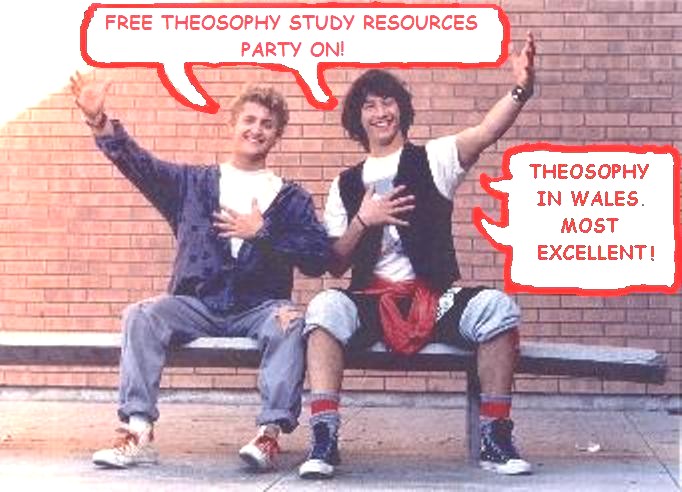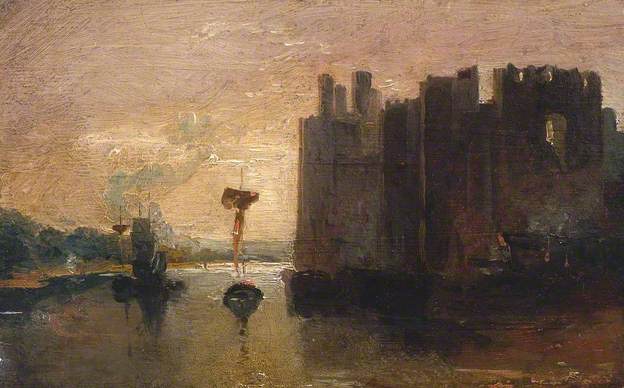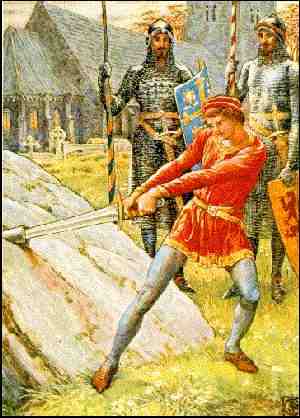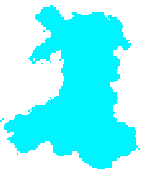A Definitive Work on Theosophy
By
William Quan Judge
INDEX
______________________
THE
OF
THEOSOPHY
Find out more about
Theosophy with these links
The Cardiff Theosophical Society Website
The
National Wales Theosophy Website
If you run a Theosophy Group, please feel free
to use any of the material on this site
The Most Basic Theosophy
Website in the Universe
A quick overview of Theosophy
and the Theosophical Society
If you run a Theosophy Group you
can use this as an introductory handout.
Theosophy Cardiff’s Instant Guide
One liners and quick explanations
H P Blavatsky is
usually the only
Theosophist that
most people have ever
heard of. Let’s
put that right
Theosophy Cardiff Nirvana Pages
The Voice of the Silence Website
An Independent Theosophical Republic
Links to Free Online Theosophy
Study Resources; Courses, Writings,
The main criteria
for the inclusion of
links on this
site is that they have some
relationship
(however tenuous) to Theosophy
and are
lightweight, amusing or entertaining.
Topics include
Quantum Theory and Socks,
Dick Dastardly and Legendary Blues Singers.
A selection of
articles on Reincarnation
Provided in
response to the large
number of
enquiries we receive at
Cardiff Theosophical
Society on this subject
The Voice of the Silence Website
Caernarvon Castle,
North Wales. circa 1798
Joseph Mallord
William Turner (1775‑1851)
This is for
everyone, you don’t have to live
in Wales to
make good use of this Website
The Seven
Principles of Man
By
Annie Besant
No
Aardvarks were harmed in the
The Spiritual Home of Urban Theosophy
The Earth Base for Evolutionary Theosophy
Reincarnation
This guide has been included in response
to the number of enquiries we receive on this
subject at Cardiff
Theosophical Society
From A Textbook
of Theosophy By C W Leadbeater
How We Remember our Past Lives
Life after Death & Reincarnation
The Slaughter of the Battle of the Somme 1916 leads to
a great demand by the public for lectures on
Reincarnation
Classic Introductory Theosophy Text
A Text Book of Theosophy By C
What Theosophy Is From the Absolute to Man
The Formation of a Solar System The Evolution of Life
The Constitution of Man After Death
Reincarnation
The Purpose of Life The Planetary Chains
The Result of Theosophical Study
The Occult World
By
Alfred Percy
Sinnett
The Occult
World is an treatise on the
Occult and
Occult Phenomena, presented
in readable style, by an early giant of
the
Theosophical Movement.
Preface to the American Edition Introduction
Occultism and its Adepts The Theosophical Society
First Occult Experiences Teachings of Occult Philosophy
Later Occult Phenomena Appendix
by
Annie Besant
THE PHYSICAL PLANE THE ASTRAL PLANE
KÂMALOKA THE MENTAL PLANE DEVACHAN
THE BUDDHIC AND NIRVANIC PLANES
THE THREE KINDS OF KARMA COLLECTIVE KARMA
THE LAW OF SACRIFICE MAN'S
ASCENT
______________________
Annie Besant Visits Cardiff 1924
The Theosophy Cardiff Nirvana Pages
National Wales Centre for Theosophy
Blavatsky Wales Theosophy Group
______________________
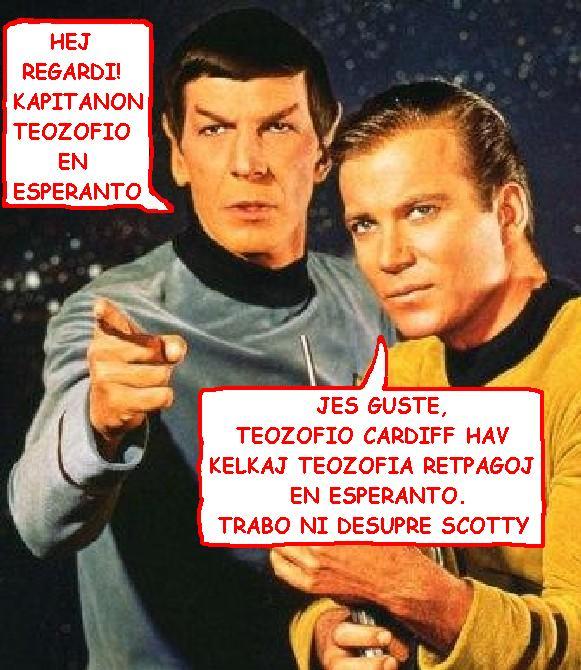
_______________________
Theosophy Cardiff Cancels its Affiliation
to the Adyar Based Theosophical Society
and becomes an independent body within
the Worldwide Theosophical Movement
Theosophy Birmingham (England)
The Birmingham Annie Besant Lodge
Theosophy Cardiff has links with the
__________________
The Theosophy Cardiff
Glastonbury Pages
The Theosophy Cardiff Guide to
The Theosophy Cardiff Guide to
The Theosophy Cardiff Guide to
The Terraced Maze of Glastonbury Tor
Glastonbury and
Joseph of Arimathea
The Grave of King Arthur & Guinevere
Views of Glastonbury High Street
The Theosophy Cardiff Guide to
__________________
Camberley, Surrey,
England GU15 2LF
Concerns about
the fate of the wildlife as
Tekels Park is to
be Sold to a Developer
Concerns are
raised about the fate of the
wildlife as The Spiritual
Retreat,
Tekels Park in
Camberley, Surrey,
England is to be
sold to a developer.
Tekels Park is a
50 acre woodland park,
purchased
for the Adyar
Theosophical
In addition to
concern about the park,
many are worried about the
future
of the Tekels
Park Deer as they
Confusion as the Theoversity moves
out of
Tekels Park to Southampton,
Glastonbury &
Chorley in Lancashire while the
leadership claim
that the Theosophical Society will
carry on using
Tekels Park despite its sale to a developer
Anyone planning a
“Spiritual” stay at the
Tekels Park Guest
House should be aware of the sale.
Future of Tekels Park Badgers in Doubt
Party On! Tekels Park Theosophy NOT
Tekels Park & the Loch Ness Monster
A Satirical view
of the sale of Tekels Park
in Camberley,
Surrey to a developer
The Toff’s Guide to the Sale of Tekels Park
What the men in
top hats have to
say about the
sale of Tekels Park
__________________________
An Outline of Theosophy
Charles Webster Leadbeater
Theosophy - What it is How is it Known?
The Method of Observation General Principles
The Three Great Truths Advantage Gained from this Knowledge
The Deity
The Divine Scheme The Constitution of Man
The True Man
Reincarnation
The Wider Outlook
Death Man’s Past and Future Cause and Effect
______________________________
A B C D EFG H IJ KL M N OP QR S T UV WXYZ
Complete Theosophical Glossary in Plain Text Format
1.22MB
Quick Explanations with Links to More Detailed Info
What is Theosophy ? Theosophy Defined (More Detail)
Three Fundamental Propositions Key Concepts of Theosophy
Cosmogenesis Anthropogenesis Root Races
Ascended Masters After Death States
The Seven Principles of Man Karma
Reincarnation Helena Petrovna Blavatsky
Colonel Henry Steel Olcott William Quan Judge
The Start of the Theosophical
Society
History of the Theosophical
Society
Theosophical Society Presidents
History of the Theosophical
Society in Wales
The Three Objectives of the
Theosophical Society
Explanation of the Theosophical
Society Emblem
The Theosophical Order of
Service (TOS)
Glossaries of Theosophical Terms
Index of Searchable
Full Text Versions of
Definitive
Theosophical Works
H P Blavatsky’s Secret Doctrine
Isis Unveiled by H P Blavatsky
H P Blavatsky’s Esoteric Glossary
Mahatma Letters to A P Sinnett 1 - 25
A Modern Revival of Ancient Wisdom
(Selection of Articles by H P Blavatsky)
The Secret Doctrine – Volume 3
A compilation of H P Blavatsky’s
writings published after her death
Esoteric Christianity or the Lesser Mysteries
The Early Teachings of The Masters
A Collection of Fugitive Fragments
Fundamentals of the Esoteric Philosophy
Mystical,
Philosophical, Theosophical, Historical
and Scientific
Essays Selected from "The Theosophist"
Edited by George Robert Stow Mead
From Talks on the Path of Occultism - Vol. II
In the Twilight”
Series of Articles
The In the
Twilight” series appeared during
1898 in The
Theosophical Review and
from 1909-1913 in The Theosophist.
compiled from
information supplied by
her relatives and friends and edited by A P Sinnett
Letters and
Talks on Theosophy and the Theosophical Life
Obras Teosoficas En Espanol
Theosophische Schriften Auf Deutsch
An Outstanding
Introduction to Theosophy
By a student of
Katherine Tingley
Elementary Theosophy Who is the Man? Body and Soul
Body, Soul and Spirit Reincarnation Karma
Nature is infinite in space and time --
boundless and eternal, unfathomable and ineffable. The all-pervading essence of
infinite nature can be called space, consciousness, life, substance, force,
energy, divinity -- all of which are fundamentally one.
2) The finite and the infinite
Nature is a unity in diversity, one in
essence, manifold in form. The infinite whole is composed of an infinite number
of finite wholes -- the relatively stable and autonomous things (natural
systems or artefacts) that we observe around us. Every natural system is not
only a conscious, living, substantial entity, but is
consciousness-life-substance, of a particular range of density and form.
Infinite nature is an abstraction, not an entity; it therefore does not act or
change and has no attributes. The finite, concrete systems of which it is
composed, on the other hand, move and change, act and interact, and possess
attributes. They are composite, inhomogeneous, and ultimately transient.
3) Vibration/worlds within worlds
The one essence manifests not only in
infinitely varied forms, and on infinitely varied scales, but also in
infinitely varying degrees of spirituality and substantiality, comprising an
infinite spectrum of vibration or density. There is therefore an endless series
of interpenetrating, interacting worlds within worlds, systems within systems.
The energy-substances of higher planes or
subplanes (a plane being a particular range of vibration) are relatively more
homogeneous and less differentiated than those of lower planes or subplanes.
Just as boundless space is comprised of
endless finite units of space, so eternal duration is comprised of endless
finite units of time. Space is the infinite totality of worlds within worlds,
but appears predominantly empty because only a tiny fraction of the
energy-substances composing it are perceptible and tangible to an entity at any
particular moment. Time is a concept we use to quantify the rate at which
events occur; it is a function of
change and motion, and presupposes a
succession of cause and effect. Every entity is extended in space and changes
'in time'.
All change (of position, substance, or form)
is the result of causes; there is no such thing as absolute chance. Nothing can
happen for no reason at all for nothing exists in isolation; everything is part
of an intricate web of causal interconnections and interactions. The keynote of
nature is harmony: every action is automatically followed by an equal and
opposite reaction, which sooner or later rebounds upon the originator of the
initial act. Thus, all our thoughts and deeds will eventually bring us
'fortune' or 'misfortune' according to the degree to which they were harmonious
or disharmonious. In the long term, perfect justice prevails in nature.
Because nature is fundamentally one, and
the same basic habits and structural, geometric, and evolutionary principles
apply throughout, there are correspondences between microcosm and macrocosm.
The principle of analogy -- as above, so below -- is a vital tool in our
efforts to understand reality.
All finite systems and their attributes are
relative. For any entity, energy-substances vibrating within the same range of
frequencies as its outer body are 'physical' matter, and finer grades of
substance are what we call energy, force, thought, desire, mind, spirit,
consciousness, but these are just as material to entities on the corresponding
planes as our physical world is to us. Distance and time units are also
relative: an atom is a solar system on its own scale, reembodying perhaps
millions of times in what for us is one second, and our whole galaxy may be a
molecule in some supercosmic entity, for which a million of our years is just a
second. The range of scale is infinite: matter-consciousness is both infinitely
divisible and infinitely aggregative.
All natural systems consist of smaller
systems and form part of larger systems. Hierarchies extend both 'horizontally'
(on the same plane) and 'vertically' or inwardly (to higher and lower planes).
On the horizontal level, subatomic particles form atoms, which combine into
molecules, which arrange themselves into cells, which form tissues and organs,
which form part of organisms, which form part of ecosystems, which form part of
planets, solar systems, galaxies, etc. The constitution of worlds and of the
organisms that inhabit them form 'vertical' hierarchies, and can be divided
into several interpenetrating layers or elements, from physical-astral to
psychomental to spiritual-divine, each of which can be further divided.
The human constitution can be divided up in
several different ways: e.g. into a trinity of body, soul, and spirit; or into
7 'principles' -- a lower quaternary consisting of physical body, astral
model-body, life-energy, and lower thoughts and desires, and an upper triad
consisting of higher mind (reincarnating ego), spiritual intuition, and inner
god. A planet or star can be regarded as a 'chain' of 12 globes, existing on 7
planes, each globe comprising several subplanes.
The highest part of every multilevelled
organism or hierarchy is its spiritual summit or 'absolute', meaning a
collective entity or 'deity' which is relatively perfected in relation to the
hierarchy in question. But the most 'spiritual' pole of one hierarchy is the
most 'material' pole of the next, superior hierarchy, just as the lowest pole
of one hierarchy is the highest pole of the one below.
Each level of a hierarchical system
exercises a formative and organizing influence on the lower levels (through the
patterns and prototypes stored up from past cycles of activity), while the
lower levels in turn react upon the higher. A system is therefore formed and
organized mainly from within outwards, from the inner levels of its
constitution, which are relatively more enduring and developed than the outer
levels. This inner guidance is sometimes active and selfconscious, as in our
acts of free will (constrained, however, by karmic tendencies from the past),
and sometimes it is automatic and passive, giving rise to our own automatic
bodily functions and habitual and instinctual behavior, and to the orderly,
lawlike operations of nature in general. The 'laws' of nature are therefore the
habits of the various grades of conscious entities that compose reality,
ranging from higher intelligences
(collectively forming the universal mind) to elemental nature-forces.
10) Consciousness and its vehicles
The core of every entity -- whether atom,
human, planet, or star -- is a monad, a unit of consciousness-life-substance, which
acts through a series of more material vehicles or bodies. The monad or self in
which the consciousness of a particular organism is focused is animated by
higher monads and expresses itself through a series of lesser monads, each of
which is the nucleus of one of the lower vehicles of the entity in question.
The following monads can be distinguished: the divine or galactic monad, the
spiritual or solar monad, the higher human or planetary-chain monad, the lower
human or globe monad, and the animal, vital-astral, and physical monads. At our
present stage of evolution, we are essentially the lower human monad, and our
task is to raise our consciousness from the animal-human to the spiritual-human
level of it.
Evolution means the unfolding, the bringing
into active manifestation, of latent powers and faculties 'involved' in a
previous cycle of evolution. It is the building of ever fitter vehicles for the
expression of the mental and spiritual powers of the monad. The more
sophisticated the lower vehicles of an entity, the greater their ability to
express the powers locked up in the higher levels of its constitution. Thus all
things are alive and conscious, but the degree of manifest life and
consciousness is extremely varied.
Evolution results from the interplay of
inner impulses and environmental stimuli. Ever building on and modifying the
patterns of the past, nature is infinitely creative.
12) Cyclic evolution/re-embodiment
Cyclic evolution is a fundamental habit of
nature. A period of evolutionary activity is followed by a period of rest. All
natural systems evolve through re-embodiment. Entities are born from a seed or
nucleus remaining from the previous evolutionary cycle of the monad, develop to
maturity, grow old, and pass away, only to re-embody in a new form after a
period of rest. Each new embodiment is the product of past karma and present
choices.
Nothing comes from nothing: matter and
energy can be neither created nor destroyed, but only transformed. Everything
evolves from preexisting material. The growth of the body of an organism is
initiated on inner planes, and involves the transformation of higher
energy-substances into lower, more material ones, together with the attraction
of matter from the environment.
When an organism has exhausted the store of
vital energy with which it is born, the coordinating force of the indwelling
monad is withdrawn, and the organism 'dies', i.e. falls apart as a unit, and
its constituent components go their separate ways. The lower vehicles decompose
on their respective subplanes, while, in the case of humans, the reincarnating
ego enters a dreamlike state of rest and assimilates the experiences of the
previous incarnation. When the time comes for the next embodiment, the reincarnating
ego clothes itself in many of the same atoms of different grades that it had
used previously, bearing the appropriate karmic impress. The same basic
processes of birth, death,
and rebirth apply to all entities, from atoms to humans to stars.
14) Evolution and involution of worlds
Worlds or spheres, such as planets and stars,
are composed of, and provide the field for the evolution of, 10 kingdoms -- 3
elemental kingdoms, mineral, plant, animal, and human kingdoms, and 3 spiritual
kingdoms. The impulse for a new manifestation of a world issues from its
spiritual summit or hierarch, from which emanate a series of steadily denser
globes or planes; the One expands into the many. During the first half of the
evolutionary cycle (the arc of descent) the energy-substances of each plane
materialize or condense, while during the second half (the arc of ascent) the
trend is towards dematerialization or etherealization, as globes and entities
are reabsorbed into the spiritual hierarch for a period of nirvanic rest. The
descending arc is characterized by the evolution of matter and involution of
spirit, while the ascending arc is characterized by the evolution of spirit and
involution of matter.
In each grand cycle of evolution,
comprising many planetary embodiments, a monad begins as an unselfconsciousness
god-spark, embodies in every kingdom of nature for the purpose of gaining
experience and unfolding its inherent faculties, and ends the cycle as a self
conscious god. Elementals ('baby monads') have no free choice, but
automatically act in harmony with one another and the rest of nature. In each
successive kingdom differentiation and individuality increase, and reach their
peak in the human kingdom with the attainment of selfconsciousness and a large
measure of free will.
In the human kingdom in particular,
self-directed evolution comes into its own. There is no superior power granting
privileges or handing out favours; we evolve according to our karmic merits and
demerits. As we progress through the spiritual kingdoms we become increasingly
at one again with nature, and willingly 'sacrifice' our circumscribed
selfconscious freedoms (especially the freedom to 'do our own thing') in order
to work in peace and harmony with the greater whole of which we form an
integral part. The highest gods of one hierarchy or world-system begin as
elementals in the next. The matter of any plane is composed of aggregated,
crystallized monads in their nirvanic sleep, and the spiritual and divine
entities embodied as planets and stars are the electrons and atomic nuclei --
the material building blocks -- of worlds on even larger scales. Evolution is
without beginning and without end, an endless adventure through the fields of
infinitude, in which there are always new worlds of experience in which to
become selfconscious masters of life.
There is no absolute separateness in
nature. All things are made of the same essence, have the same spiritual-divine
potential, and are interlinked by magnetic ties of sympathy. It is impossible
to realize our full potential, unless we recognize the spiritual unity of all
living beings and make universal brotherhood the keynote of our lives.
Hey Look!
Theosophy in Cardiff
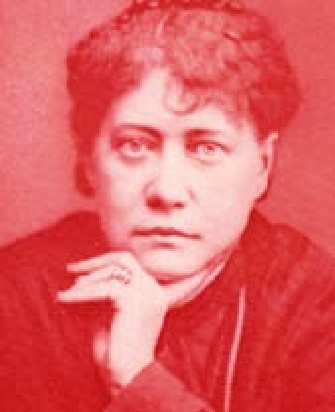
Helena Petrovna Blavatsky (1831 – 1891)
The Founder of Modern Theosophy
Is the Desire to Live Selfish?
Ancient Magic in Modern Science
Babel Of Modern Thought
Precepts Compiled by H P Blavatsky
Obras Por H P Blavatsky
En Espanol
Articles about the Life of H
P Blavatsky
H P Blavatsky
the Light-Bringer
by
Geoffrey A Barborka
The Blavatsky Lecture of 1970
Try these if you are looking for a local
Theosophy Group or Centre
UK Listing of Theosophical Groups
Please tell us about your UK Theosophy Group
Guide to the
Theosophy
Arthur draws the Sword from the Stone
The Knights of The Round Table
The Roman Amphitheatre at Caerleon,
Eamont Bridge, Nr Penrith, Cumbria, England.
Geoffrey of Monmouth
(History of the Kings of Britain)
The reliabilty of this work has long been a subject of
debate but it is the first definitive account of Arthur’s
Reign
and one which puts Arthur in a historcal context.
and his version’s political agenda
According to Geoffrey of Monmouth
The first written mention of Arthur as a heroic figure
The British leader who fought twelve battles
King Arthur’s ninth victory at
The Battle of the City of the Legion
King Arthur ambushes an advancing Saxon
army then defeats them at Liddington Castle,
Badbury, Near Swindon, Wiltshire, England.
King Arthur’s twelfth and last victory against the Saxons
Traditionally Arthur’s last battle in which he was
mortally wounded although his side went on to win
No contemporary writings or accounts of his life
but he is placed 50 to 100 years after the accepted
King Arthur period. He refers to Arthur in his inspiring
poems but the earliest written record of these dates
from over three hundred years after Taliesin’s death.
Pendragon Castle
Mallerstang Valley, Nr Kirkby Stephen,
A 12th Century Norman ruin on the site of what is
reputed to have been a stronghold of Uther Pendragon
From
wise child with no earthly father to
Megastar
of Arthurian Legend
History of the Kings of Britain
Drawn from the Stone or received from the Lady of the Lake.
Sir Thomas Malory’s Le Morte d’Arthur has both versions
with both swords called Excalibur. Other versions
5th & 6th Century Timeline of Britain
From the departure of the Romans from
Britain to the establishment of sizeable
Anglo-Saxon Kingdoms
Glossary of
Arthur’s uncle:- The puppet ruler of the Britons
controlled and eventually killed by Vortigern
Amesbury, Wiltshire, England. Circa 450CE
An alleged massacre of Celtic Nobility by the Saxons
History of the Kings of Britain
Athrwys / Arthrwys
King of Ergyng
Circa 618 - 655 CE
Latin: Artorius; English: Arthur
A warrior King born in Gwent and associated with
Caerleon, a possible Camelot. Although over 100 years
later that the accepted Arthur period, the exploits of
Athrwys may have contributed to the King Arthur Legend.
He became King of Ergyng, a kingdom between
Gwent and Brycheiniog (Brecon)
Angles under Ida seized the Celtic Kingdom of
Bernaccia in North East England in 547 CE forcing
Although much later than the accepted King Arthur
period, the events of Morgan Bulc’s 50 year campaign
to regain his kingdom may have contributed to
Old Welsh: Guorthigirn;
Anglo-Saxon: Wyrtgeorn;
Breton: Gurthiern; Modern Welsh; Gwrtheyrn;
*********************************
An earlier ruler than King Arthur and not a heroic figure.
He is credited with policies that weakened Celtic Britain
to a point from which it never recovered.
Although there are no contemporary accounts of
his rule, there is more written evidence for his
existence than of King Arthur.
How Sir Lancelot slew two giants,
From Sir Thomas Malory’s Le Morte d’Arthur
How Sir Lancelot rode disguised
in Sir Kay's harness, and how he
From Sir Thomas Malory’s Le Morte d’Arthur
How Sir Lancelot jousted against
four knights of the Round Table,
From Sir Thomas Malory’s Le Morte d’Arthur
General pages
about Wales, Welsh History
and The History of
Theosophy in Wales
Wales is a
Principality within the United Kingdom
and has an eastern
border with England. The land
area is just over 8,000
square miles. Snowdon in
North Wales is the
highest mountain at 3,650 feet.
The coastline is
almost 750 miles long. The population
of Wales as at the 2001 census is 2,946,200.
___________________
into categories
and presented according to relevance of website.
Web Directory
- Add Link - Submit Article - Online Store - Forum
